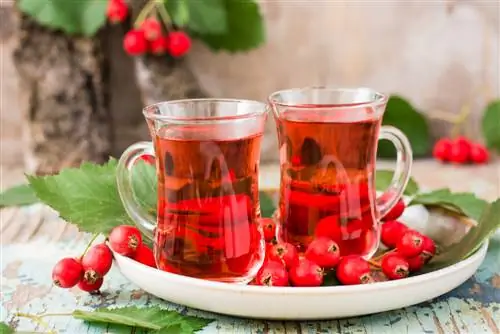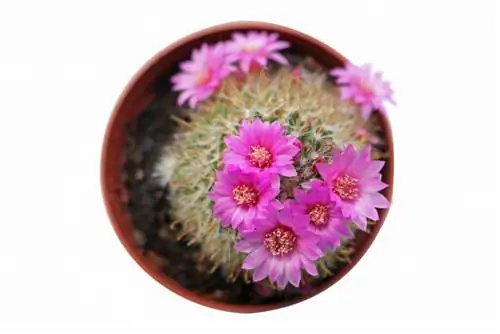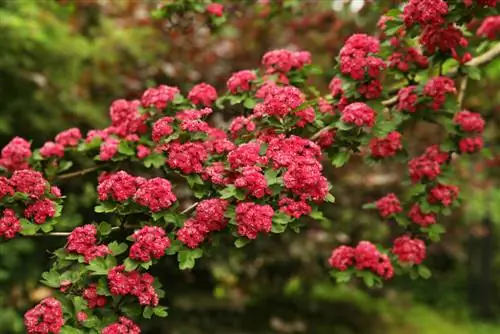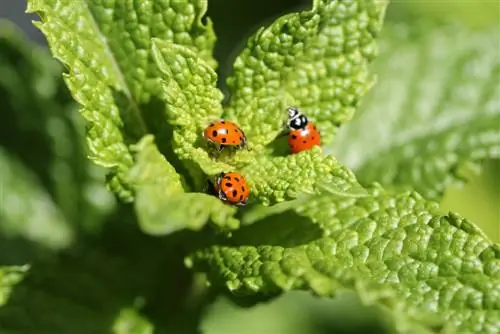- Author admin [email protected].
- Public 2023-12-16 16:46.
- Last modified 2025-01-23 11:21.
Rotthorns are particularly popular for their crimson, dense umbel flowers. However, the fact that fruit forms from it, like hawthorn, is a rare phenomenon. Read this article to find out how fruit production can be stimulated and what you can do with the berries.
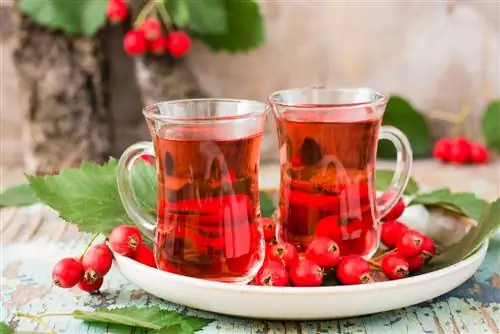
How do I promote fruit formation in hawthorn and what can you do with the fruit?
To promote hawthorn fruit production, you should ensure optimal growth conditions, cut back the shrub early and annually, and attract pollinator insects through species-rich garden management. The fruits are decorative and can be made into jams, liqueurs or syrups.
Red flower joy to the detriment of fruit
The cultivar 'Paul's Scarlet' of the two-handled hawthorn, botanically Crataegus laevigata, is considered the real hawthorn. In general, all red-flowering varieties of hawthorn, including the single-breasted hawthorn, are referred to as hawthorns. There are varieties with both simple and rose-like umbel flowers.
Breeding has given us an attractive flowering variant of the native thorn tree. However, this comes at the expense of fruit yield as most of the stamens are replaced by petals. A hawthorn therefore only rarely produces fruit, and if it does, then only sparsely.
If you don't want to miss out on the carmine-red flowers in your hedge or on the solitary ornamental shrub, nor on the decorative and usable fruit yield, it's not easy. However, you can still help with fruit formation here and there.
How to attract hawthorn fruits
In order to get a hawthorn to produce fruit, generally good all-round care is advantageous. If the bush is he althy and vital, it also has more energy for flowering and therefore fruit formation. The basic requirements should therefore be met as comprehensively as possible: This initially includes a sunny location and a calcareous, fresh, loamy soil.
To increase the abundance of flowers and thus the chance of fruit formation, cut back the hawthorn immediately after flowering, before it forms new flower heads. This is how you keep it young without affecting next year's flower yield.
Of course, a bit of luck is required for fruit formation. But through long-term ecological and species-promoting garden management, you can indirectly contribute something to fruit production. Ensure that your oasis has a diverse range of plants that are interesting for pollinating insects. This not only increases the chance that your hawthorn will be fertilized - its flowers are extremely popular with bees - but also contributes something to biodiversity in general.
To remember:
- Provide good growing conditions
- Prune early and annually
- Attracting pollinator insects through species-rich garden management
And what to do with the hawthorn fruits?
If fruit has formed, you can be grateful. On the one hand, the brick-red chokeberries are a beautiful autumn decoration, and on the other hand, they are also suitable for use in the kitchen. A lot of yield is not to be expected, but with hawthorn berries or other fruit you can conjure up tasty and vitamin-rich jams, liqueurs or syrups from the floury, sweet and sour fruits.

